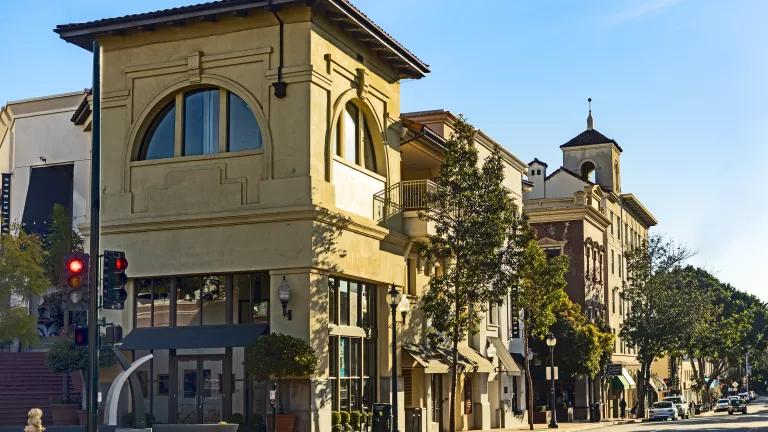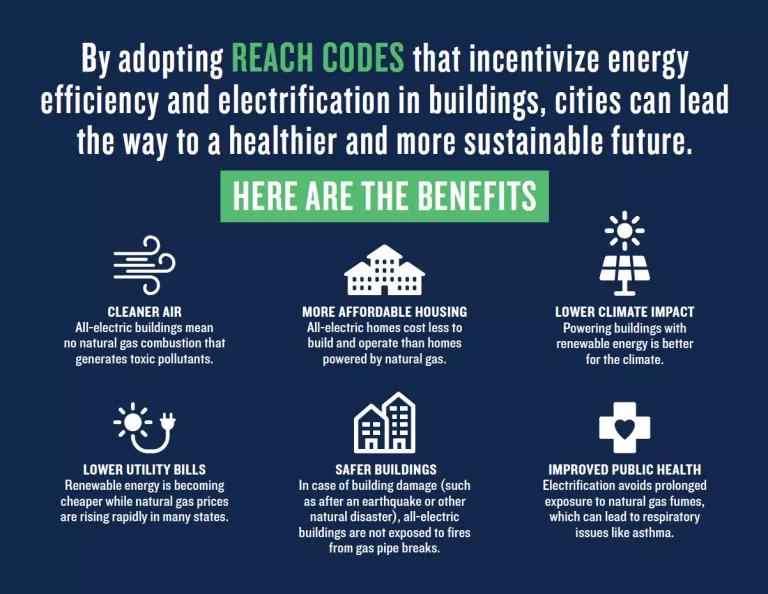SLO Could Pass the Next Landmark Clean Energy Building Code
San Luis Obispo could become one of the first cities in the state to pass policy aimed at transitioning to zero-emission electric homes and businesses that are cleaner, safer, and more affordable for their occupants.

Update: on 9/3/2019, the San Luis Obispo City Council voted 4-1 to adopt its proposed zero-emission new construction reach code that will go into effect on January 1, 2020.
Momentum is building across California to address a longstanding pollution blind spot: natural gas use in buildings. With a city council vote next week, San Luis Obispo, the coastal city of 48,000 halfway between LA and San Francisco, could become one of the first cities in the state to pass landmark policy aimed at transitioning to zero-emission electric homes and businesses that are cleaner, safer, and more affordable for their occupants.
The Clean Energy Choice for New Buildings program would amend the local building code to accelerate the transition to zero-emission electric buildings, while providing options to those who still want to develop buildings with gas: Such projects would need to meet higher energy efficiency standards. A second, separate proposal would also require new buildings still using gas to offset the pollution from their fossil fuel use by paying an in-lieu fee to help retrofit existing buildings.
Promoting the switch to electricity in buildings is a key way to meet the city's goal of carbon neutrality by 2035—residential and commercial buildings are responsible for one-quarter of California’s greenhouse gas emissions—and it also offers direct health and economic benefits to residents by avoiding the indoor air pollution, fire risks especially during earthquakes, and rapidly increasing gas prices.
San Luis Obispo and Berkeley are far from alone in recognizing the imperative for change. The City of Carlsbad has already adopted a “reach code”—in other words, a local building energy code that goes beyond state requirements—to require electric heat pump or solar thermal water heating for new construction. And more than 50 cities and counties across California are pursuing similar local codes to shift to zero-emission electric new construction.

NRDC has signed a letter of support urging San Luis Obispo (SLO) councilmembers to pass this reach code ordinance, and I recently joined a panel to discuss the many reasons why going all-electric is a smart choice. First, all-electric homes cost less and are faster to build than those heated with gas—without the need for connecting the building to the gas line in the street, installing a gas meter, gas piping in the building, and combustion venting and safety equipment, all of which save money and time—an advantage in San Luis Obispo’s ongoing housing crisis.
Building all-electric also lowers utility bills, shielding customers from hikes in gas prices. For example, Southern California Gas company—which serves SLO—has requested rate increases of 42 percent between 2018 and 2022, and Energy and Environmental Economics (E3) reported in its draft Future of Gas study for the California Energy Commission that it expects gas rates to continue to increase rapidly through 2050, making gas increasingly unaffordable.
Most importantly, San Luis Obispo's ordinance will improve air quality and health for its residents, both indoors and out. Since Californians spend 68 percent of their time indoors on average, burning gas inside the home poses no small health risk: the resulting indoor air pollution includes nitrogen dioxide, carbon monoxide, formaldehyde, and ultra-fine particles, which have been liked to increased rates of asthma, particularly in children and the elderly.
Research from Lawrence Berkeley National Laboratory has found that air pollution levels in 60 percent of homes that use gas stoves for cooking exceed levels that would be illegal outdoors.
By voting for the Clean Energy Choice for New Buildings ordinance, San Luis Obispo's councilmembers will position their city to lead a wave of other cities and counties across California in constructing a cleaner, healthier, safer, and more affordable future.



